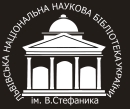DOI: https://doi.org/10.37222/2786-7552-2023-2-14
Yury Finkler
Doctor of Philological Sciences, Professor
Vyacheslav Chornovil Galician Vocational College
(Ternopil, Ukraine)
MEANS OF MASS COMMUNICATION AND THE HIERARCHY OF SOCIETY: INTERACTION FACTORS
Mechanisms of interaction between mass communication and the hierarchy of society are considered. It was found that as a result of the action of the mechanisms of mass communication effects and counter-effects, society is faced with a double process. The possibility of personalized information flow offered by digital media provides ample space for underprivileged social groups to choose media content that matches their own construction of reality. Environments in this context significantly contribute to the strengthening of the heterarchical features of society and the semiotic power of each representative of the audience against the meanings permitted from above. However, the circumstances under which this clearly democratic characteristic of mass communication practice leads to the fact that democratized social groups become increasingly large and face only such communication content that corresponds to the philosophy and expectations of their group or their environment are also investigated. This worldview, mediated by means of mass communication, transformed into a real construction of its environment, contains a danger, because it does not condition the skills with the help of which other clusters of society, which are differently positioned in the social hierarchy, can gain the worldview experience of this social group and vice versa. It is argued that, in this sense, the means of mass communication can play a significant role in creating social inequality in the hierarchical structure of society.
Keywords: cluster, communication, content, hierarchy, media, society.
References
- Potiatynyk, B. Shche nikoly ne vdavalosia zatrymaty novyi medium [It has never been possible to delay a new medium], Zbruc. Retrieved from: https://zbruc.eu/node/115159 (in Ukr.).
- Trachuk, T. (2022). Spetsyfika zastosuvannia u ZMI tekhnolohii manipuliuvannia suspilnoiu svidomistiu [It has never been possible to delay a new medium], Hraal nauky, (18–19), 277–284 (in Ukr.).
- Fesenko, A., Chorna, V.&Bondarets, B. (2022). Prykladni mediatyzovani komunikatsii: sproba kontseptualizatsii [Applied mediatized communications: an attempt at conceptualization]. Habitus. Spetsialni ta haluzevi sotsiolohii. Chornomorskyi natsionalnyi universytet imeni P. Mohyly, (36), 40–47 (in Ukr.).
- Bail, Chris (2021). Breaking the Social Media Prism: How to Make Our Platforms Less Polarizing. Princeton University Press,240 (in Eng.).
- Jensen, Klaus Bruhn (2020). Media convergence: The three degrees of network, mass, and interpersonal communication, New York Routledge, 210 (in Eng.).
- Lievrouw, Leah (2023). Alternative and Activist New Media. Oxford. Polity, 200 (in Eng.).
- McLuhan, Marshall (1962). The Gutenberg Galaxy: The Making of Typographic Man Toronto University of Toronto Press, Scholarly Publishing Division,294 (in Eng.).
- Nielsen, Rasmus Kleis & Ganter, Sarah Anne(2022).The Power of Platforms: Shaping Media and Society. Oxford University Press, 272 (in Eng.).
- Silverstone, Roger (2006). Media and Morality: On the Rise of the Mediapolis. Cambridge. Polity,224 (in Eng.).
Article design requirements
Submissions
Editorial board
2022: Issue 1
2023: Issue 2
2023: Issue 3
2024: Issue 4
2024: Issue 5


